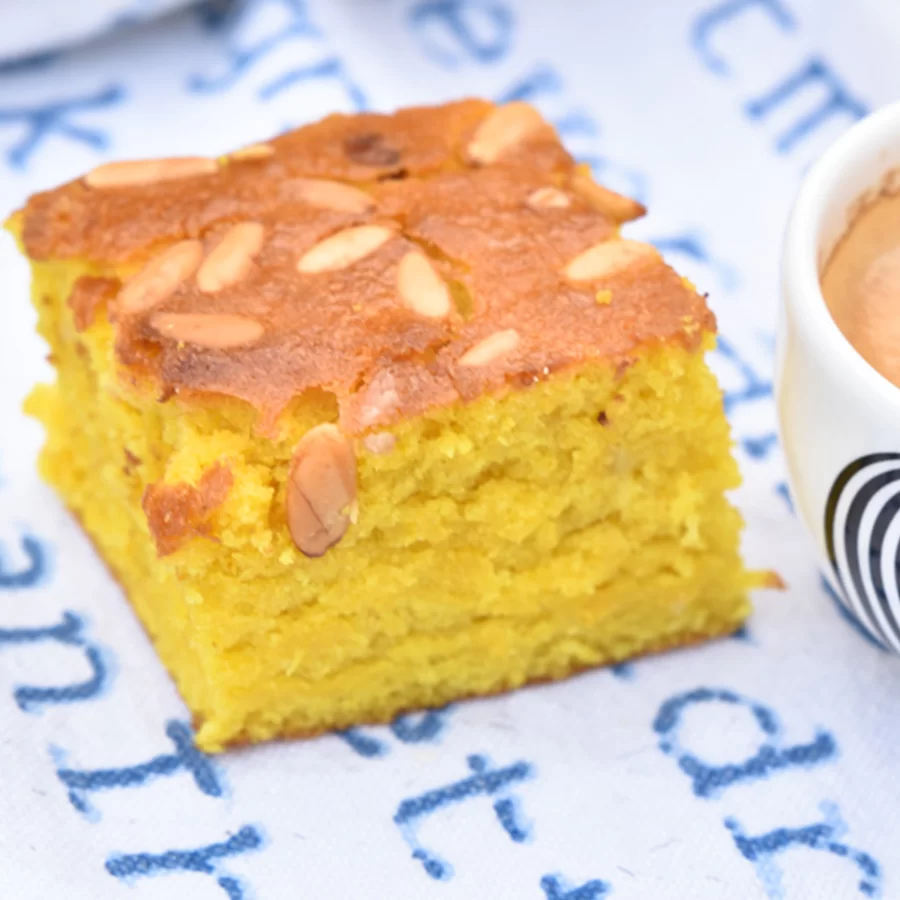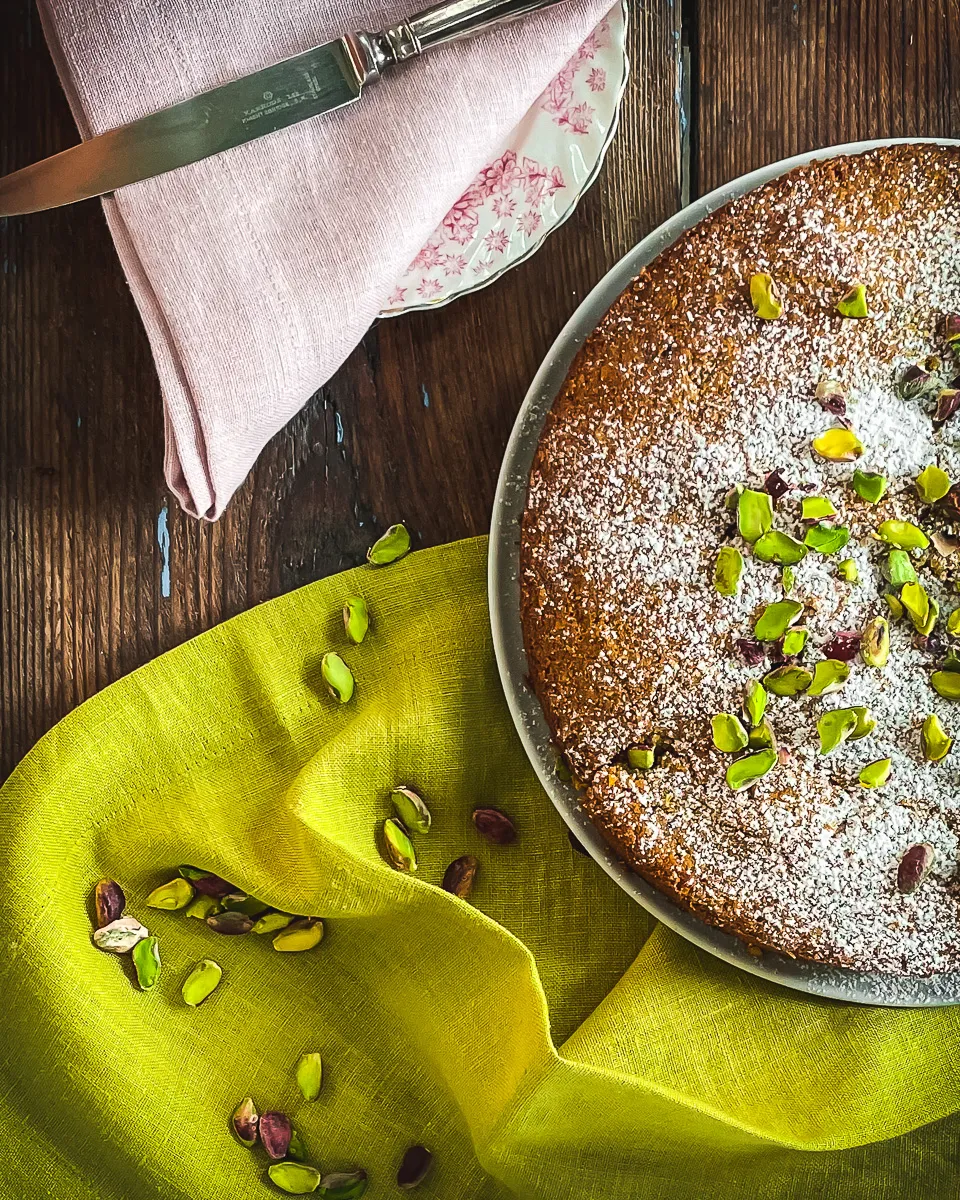Sfouf cake
- rosemary
- Jul 14
- 4 min read


Working my way through my email newsletters and looking for something relatively quick and simple I came across the above in a newsletter from Ottolenghi about the importance of suppliers of food products, and in particular the Sindyanna of Galilee collective based in Galilee in Israel. It is led by two women - Hanan and Hadas - shown here with the man himself - one of whom is Jewish the other Arab. Oh if only the world was left to ordinary people to organise - maybe even to women ... The products are of top quality, and moreover:
"Sindyanna is built on Fair Trade principles, putting all profits back into women's education and empowerment (fair prices for their harvest, jobs in the packing houses, teaching initiatives). The name itself - Sindyanna, meaning oak tree in Arabic - feels just right. Deep roots, steady growth. What gets me, though, is how they've never let their social mission compromise the quality of their produce. It's this wonderful collision of real purpose and real flavour." Yotam Ottolenghi
That particular newsletter had a couple of other recipes, which will turn up somewhere I think, but today I'm focussing on the one at the top of the page Sfouf b'Debs which showcases the carob syrup produced by Sindyanna. In his introduction Ottolenghi says you can substitute date syrup for the carob syrup in the recipe, although, here I suspect you may find carob syrup easier to find than date syrup Well Woolworths at least says it has some on its website and they certainly don't have date syrup. Not sure I've seen any carob syrup here in Eltham though. But then I haven't been looking. Maybe a health food shop as I think carob is seen as a healthy alternative to chocolate.
So sfouf. I sort of ignored the second bit of Ottolenghi's name for this recipe the b'Deb, sort of assuming that this was a way of saying it was Deb's recipe. I subsequently found I was very wrong - 'Never assume' as my work computer screensaver used to say. Because b'Deb is short for bil debis - which I think vaguely means something like debris - crumbly? Actually it refers to a carob flavoured version of sfouf which is a turmeric flavoured semolina cake.
First the turmeric version. I became confused because when I looked for sfouf on its own not only was there no chocolate, but there was also always turmeric. Indeed turmeric was often included in the name - as in these examples: Sfouf - Lebanese turmeric cake - Za'atar and Zaytoun; Sfouf - Lebanese turmeric cake - Hadia; One bowl Lebanese turmeric cake (sfouf) - Lina Jebeile/ABC; Sfouf cake - Lebanese turmeric cake - The Wild Epicurean
One thing that virtually all the recipes I found mentioned - nay - made a thing of, was that this was an eggless and butterless cake and therefore vegan. Well there was milk but that could also be a plant based milk. Although I see from the photos that it looks like a moist kind of cake, I also remembering someone saying that it had a tendency to dryness and/or it didn't keep very long.
Other features? Aside from the universal turmeric flavour which also, of course, gives the cake its colour another common flavouring was aniseed in the cake and tahini which was used to grease the cake pan. It is also more or less universally agreed that this is not a dessert cake, but a cake to be served in small pieces with coffee. 'Sfouf' means lines or rows and it is always cut into small squares or diamonds - formed from the straight cuts made into the cake.
Ottolenghi included the aniseed - or fennel as a substitute - in his cake but there was no turmeric, because, as I discovered when I thought to search on sfouf and deb, this is a slightly different cake - still eggless and butterless - but flavoured with carob and with that different name:
"Carob molasses (debs el kharroub) is a thick brown syrup, traditionally prepared in Lebanon -and throughout the Levant -from carob pods: the pods are milled then soaked in water and a thick and sweet liquid is extracted by reducing the liquid from soaking the pods." Chef in Disguise

Sesame seeds also seemed to be a common decoration for this particular cake, as shown in this example of Sfouf bil debis from a website called Chef in Disguise.
Ottolenghi doesn't grease his pan with tahini, although he does line the tin with baking paper, and then spreads tahini across the base before pouring in the batter, which is then drizzled with tahini and scattered with those sesame seeds.
All very Middle-Eastern. It's generally served at family gatherings and other celebrations, and I think it would need to be, because the pieces are small and it's quite a large quantity, so you would be pushed to eat it all if you were just making it for yourself and a couple of friends. Particularly if indeed it does dry out quickly.
A last passing thought. I could not find a recipe for this in any of Claudia Roden's or Greg Malouf's books, and nor could I find any origin stories or history. So is this a modern thing?
So nice to know that some Arabs and Jews work together happily however. Probably vastly more than we realise.
YEARS GONE BY
July 14 - Bastille Day - the locals will be hoping for a French win over there at Le Tour.
2023 - Nothing
2022 - Baklava - a request
2020 - Deleted
2018 - Nothing
2017 - Nothing








Middle Eastern is not the flavour of the year so far (at least for me). Too close to Gaza.. Nor is the word Sfouf! But the cakes look quite nice in a sort of burnt offerings sort of way, but perhaps what one might expect from Galilee? 🤫